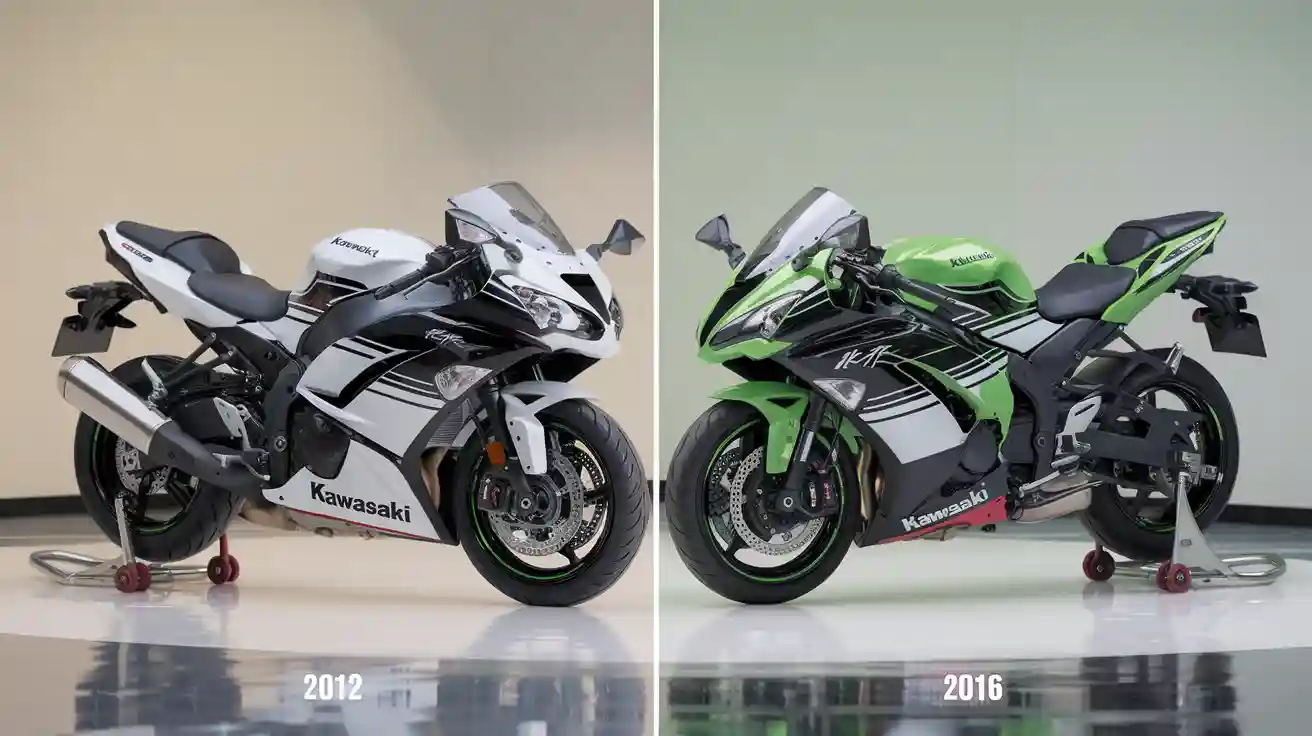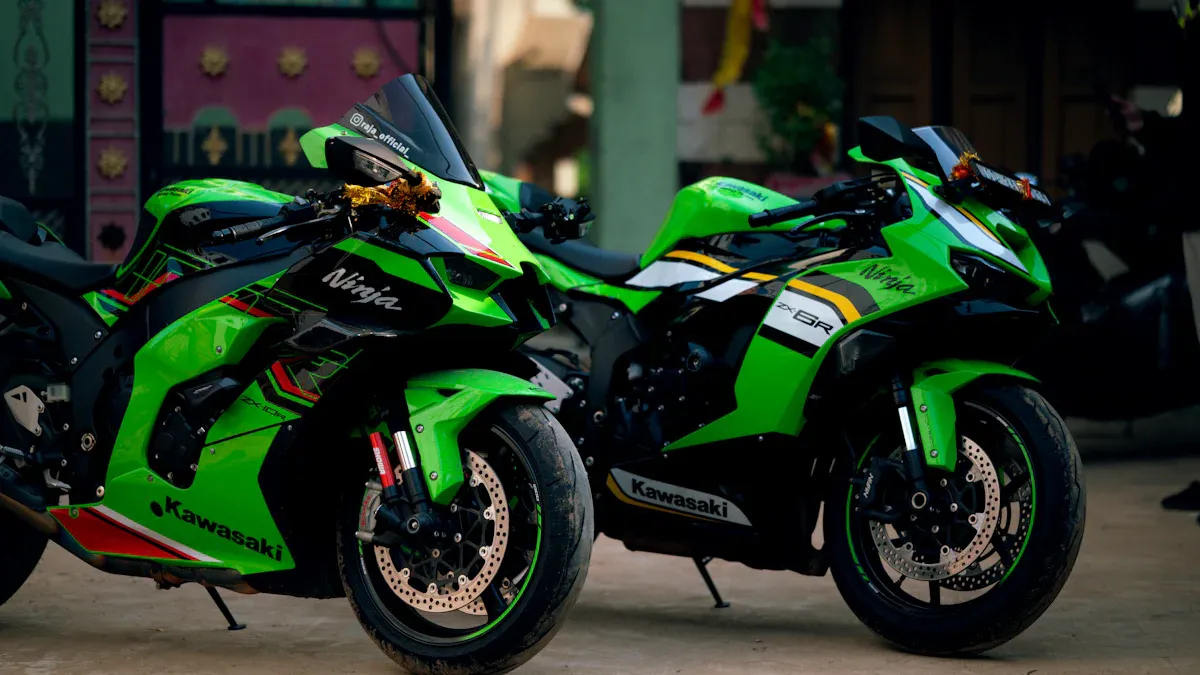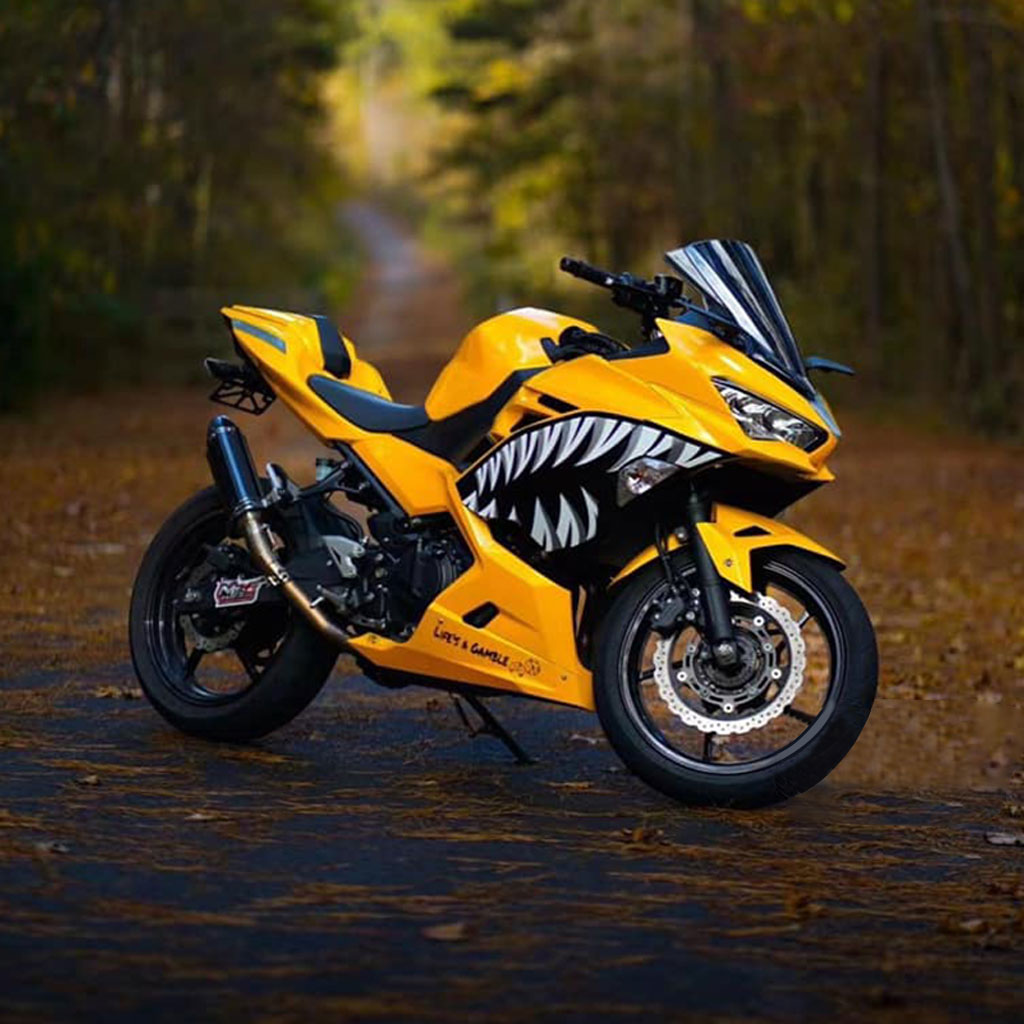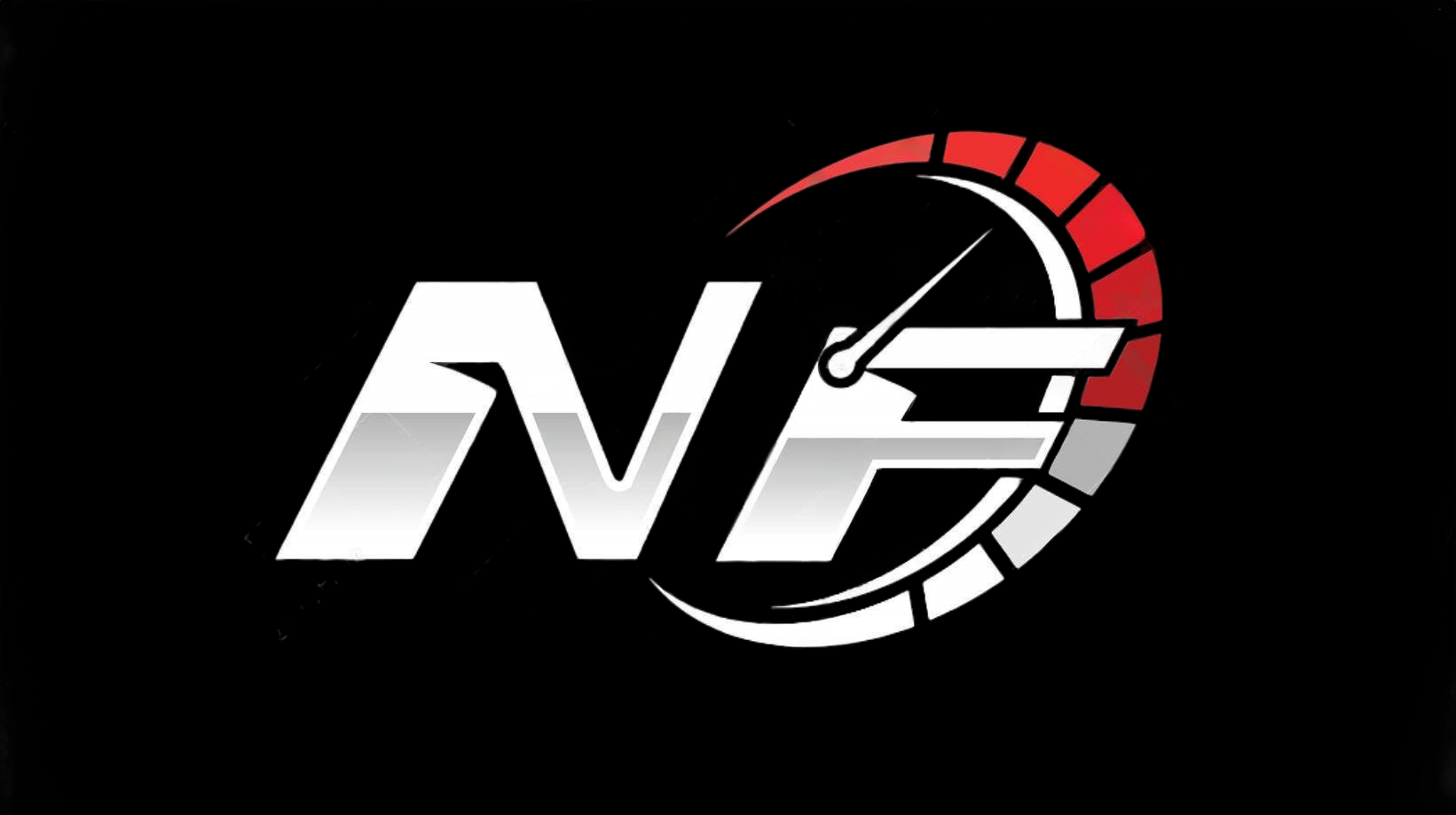Kawasaki 650R Ninja 2012 and 2016 Head to Head Analysis

Kawasaki made significant updates to the kawasaki 650r ninja 2012 when designing the 2016 model. Riders notice changes in the ninja's engine performance, sharper styling, and improved comfort. The 2012 kawasaki ninja 650 stands out for its original design, while the newer ninja version brings advanced technology and refined ergonomics. This comparison shows how kawasaki focused on both performance and value. A detailed comparison helps riders see which ninja model fits their needs best.
Engine and Performance Comparison
Detailed Specs Comparison: Engine Specifications
A detailed specs comparison reveals that both the 2012 and 2016 Kawasaki Ninja 650 models use a 649 cc parallel twin, liquid-cooled engine. However, the 2016 ninja delivers a higher maximum power output and a slightly different torque curve. Riders notice these changes in real-world performance.
| Specification | 2012 Kawasaki Ninja 650 | 2016 Kawasaki Ninja 650 |
|---|---|---|
| Engine Type | Parallel twin, liquid-cooled | Parallel twin, liquid-cooled |
| Displacement (cc) | 649 | 649 |
| Max Power | ~67.2 bhp @ 8,000 rpm | 71 bhp @ 8,500 rpm |
| Max Torque | ~65.7 Nm @ 6,500 rpm | 64 Nm @ 7,000 rpm |
| Transmission | 6-speed manual | 6-speed manual |
| Bore (mm) | 83 | 83 |
| Stroke (mm) | 60 | 60 |
| Valves per Cylinder | 4 | 4 |
| Cooling System | Liquid cooled | Liquid cooled |
| Compression Ratio | 10.8:1 | Not specified |
| Battery | Maintenance free | Maintenance free |
| Emission Standard | BS4 | Not specified |
Both ninja models share many core specs, but the 2016 version stands out in this detailed specs comparison with its increased power. Kawasaki refined the engine for smoother delivery and improved efficiency, which benefits riders seeking better performance.
Power Delivery and Throttle Response
Kawasaki focused on enhancing throttle response and power delivery in the 2016 ninja. The newer model produces 71 bhp at 8,500 rpm, compared to the 2012 ninja's estimated 67.2 bhp at 8,000 rpm. This increase in power gives the 2016 ninja a livelier feel, especially at higher revs. The torque curve also shifted, with the 2012 model offering peak torque of about 65.7 Nm at 6,500 rpm, while the 2016 version delivers 64 Nm at 7,000 rpm. Riders experience a more linear and responsive throttle on the 2016 ninja, making acceleration smoother and more predictable. This improvement in engine and performance helps the 2016 model appeal to those who value spirited riding and precise control.
Fuel Efficiency Differences
Fuel efficiency remains a key factor in any comparison between these two ninja models. The 2012 Kawasaki Ninja 650 achieves around 50 MPG in real-world conditions, according to reviews and user data. The 2016 ninja holds an official ARAI rating of 21 kmpl, which converts to about 49.4 MPG under ideal test conditions. Real-world mileage for the 2016 model closely matches the 2012 ninja, with most riders reporting similar fuel consumption.
| Model Year | Fuel Efficiency Type | Fuel Efficiency Value | Notes |
|---|---|---|---|
| 2012 | Real-world (Fuelly data) | 48.1 MPG | Based on 8 vehicles and 88,719 miles |
| 2012 | Real-world (Review) | ~50 MPG | From Best Beginner Motorcycles review |
| 2016 | Official (ARAI rating) | 21 kmpl (~49.4 MPG) | Official rating, ideal test conditions |
| 2016 | Real-world | N/A | Not explicitly stated, but similar to 2012 model |
The 2012 ninja features a 4.2-gallon fuel tank, providing an estimated range of 194 miles per tank. No specific tank capacity or range data is available for the 2016 ninja, but riders can expect similar performance due to comparable fuel efficiency and engine specs.
Note: Both models offer strong fuel efficiency for their class, making them practical choices for daily commuting and longer rides.
Riding Experience
Riders notice clear differences in the riding experience between the 2012 and 2016 Kawasaki Ninja 650 models. The 2012 ninja offers a solid and predictable ride. Many riders appreciate its stable chassis and comfortable upright seating. The bike feels planted on highways and city streets. However, some riders mention that the older ninja feels heavier, especially during quick maneuvers or low-speed turns.
The 2016 ninja brings several refinements that improve the overall experience. Kawasaki engineers focused on making the bike feel more agile and responsive. The updated chassis and suspension provide better feedback through corners. Riders report that the 2016 ninja handles twisty roads with more confidence. The throttle response feels smoother, and the power delivery is more linear. This change helps both new and experienced riders feel in control, even when pushing the bike’s limits.
Many motorcycle journalists point out that the 2016 ninja, while not as light as the later 2017 model, still benefits from improved ergonomics and a more refined ride. The seat sits lower and feels narrower, making it easier for riders to reach the ground. Handlebars are positioned for a sportier stance, but comfort remains a priority. Riders can spend hours in the saddle without fatigue.
Commuters find the 2016 ninja easier to handle in traffic. The lighter feel and improved suspension absorb bumps and rough roads better than the 2012 version. The brakes offer more precise control, which boosts rider confidence during sudden stops. On longer rides, the wind protection and seat comfort stand out as key strengths for both models, but the 2016 ninja edges ahead with its updated design.
Design and Aesthetics: 2012 Kawasaki Ninja 650 vs 2016

Bodywork and Styling Changes
Kawasaki introduced bold changes to the bodywork of the ninja between 2012 and 2016. The 2012 ninja 650 displayed a more rounded and classic sportbike look. The fairings appeared wider, and the lines flowed smoothly from front to back. In 2016, the ninja received sharper angles and a more aggressive front end. The headlights became sleeker, and the windscreen integrated better with the body. Riders noticed that the 2016 model looked more modern and race-inspired. Kawasaki also improved the paint quality and added new color options. These features helped the 2016 ninja stand out in a crowded market.
Ergonomics and Rider Position
The ninja 650 has always focused on comfort, but the 2016 version made key improvements. The seat on the 2016 model sits lower and feels narrower, which helps shorter riders reach the ground. Kawasaki adjusted the handlebars to create a slightly sportier position without sacrificing comfort. The footpegs moved just enough to give riders better control during turns. Many riders say the 2016 ninja feels easier to handle in city traffic and on long rides. These ergonomic features show that Kawasaki listened to rider feedback and made practical changes.
Visual Appeal
Both versions of the ninja 650 attract attention, but the 2016 model brings a fresh look. The sharper lines and updated graphics give it a high-performance vibe. The new headlight design and compact tail section add to its sporty image. Riders often mention that the 2016 ninja looks more expensive than its price suggests. The 2012 ninja still appeals to those who prefer a classic sportbike style. Each model offers unique visual features, but the 2016 ninja stands out for its modern and aggressive appearance.
Tip: When choosing between these two, riders should consider which design matches their personality and riding style.
Technology and Features Detailed Comparison
Instrumentation and Display Updates
A detailed comparison of the instrumentation on the 2012 and 2016 ninja models shows that both bikes use digital displays. Riders see a clear speedometer, tachometer, and trip odometer on each model. Kawasaki includes a clock, a fuel level gauge, and a temperature warning light as standard features. The shift light is adjustable, which helps riders know when to change gears. However, neither the 2012 nor the 2016 ninja includes a gear position indicator. This feature only appears in the 2017 model and later. Riders who want to see which gear they are in must rely on their experience or upgrade to a newer version. The table below summarizes the standard instrumentation features on the 2016 ninja:
| Feature | 2016 Kawasaki Ninja 650 Instrumentation Status |
|---|---|
| Digital Instrumentation | Standard |
| Clock | Standard |
| Speedometer | Standard |
| Tachometer | Standard |
| Trip Odometer | Standard |
| Trip Computer | Standard |
| Fuel Level Warning | Standard (Gauge) |
| Temperature Warning | Standard (Light) |
| Shift Light | Standard (Adjustable) |
This technology and features package gives riders the essential information they need for daily riding. The display is easy to read, even in bright sunlight. Riders appreciate the simple layout and reliable performance.
Electronics and Rider Aids (ABS, Slipper Clutch)
Kawasaki focuses on practical technology and features for the ninja 650. Both the 2012 and 2016 models offer ABS as an option in many markets. ABS helps prevent wheel lock-up during sudden stops. Riders feel more confident in wet or slippery conditions. The detailed comparison shows that neither model includes a slipper clutch. This advanced feature appears in later generations of the ninja. Riders who want a slipper clutch must look at newer models or aftermarket upgrades.
The electronics package on both bikes remains simple. Kawasaki does not include traction control or ride modes in these versions. Riders get a straightforward experience with minimal distractions. This approach appeals to those who prefer a pure connection to the road. The technology and features in these models focus on reliability and ease of use.
Note: Riders who want advanced electronics and more rider aids should consider newer ninja models. The 2012 and 2016 versions keep things simple and dependable.
Lighting and Controls
Lighting and controls play a key role in the daily usability of the ninja 650. Both the 2012 and 2016 models use halogen headlights. The 2016 ninja receives a sharper headlight design, which improves the bike’s modern look. The lighting system provides good visibility at night and in poor weather. Turn signals and tail lights use standard bulbs. Riders find the controls easy to reach and operate. The switchgear feels solid and well-built.
Kawasaki ensures that all essential features are present. The handlebar controls include switches for lights, turn signals, and the horn. The levers for the clutch and brake offer smooth operation. Riders can adjust the mirrors easily for better rear visibility. The technology and features in the lighting and controls section focus on safety and comfort.
A detailed comparison of the 2012 and 2016 ninja models shows that Kawasaki keeps the technology and features package practical. Riders get the essentials without unnecessary complexity. This approach makes both bikes reliable choices for new and experienced riders.
Comfort and Ride Quality Comparison
Seat Design and Comfort
The seat design on the 2016 ninja model shows clear improvements over the 2012 version. Riders notice a lower and narrower seat, which makes it easier to reach the ground. The seat shape supports better ergonomics, especially for shorter riders. Adjustable clutch and brake levers help riders with different hand sizes find a comfortable grip. The fuel tank has sculpted sides, allowing for a better knee grip and a more secure riding position. These changes bring several pros, such as easier flat-footing and improved comfort during long rides. Some cons remain, including reports that the seat can feel hard after many hours on the road. Riders who plan frequent long-distance trips may want to consider aftermarket seat options.
Suspension and Handling
Both the 2012 and 2016 ninja models use a 41 mm front fork and a rear shock adjustable for preload. The 2016 version features a redesigned chassis with a lighter steel trellis frame and swingarm. This update reduces weight and improves handling. The rear shock now includes linkage for progressive action, which enhances ride comfort. Lighter five-spoke wheels also help the suspension work more efficiently. Riders experience better handling in city traffic and on twisty roads. The long-travel suspension absorbs potholes and rough surfaces, making the ninja a practical choice for daily use. Pros include improved stability and confidence in corners. Cons involve the lack of full adjustability in the suspension, which may limit fine-tuning for aggressive riders.
Daily Use and Long Ride Suitability
The ninja 650 stands out for its upright and comfortable riding position. Riders find it suitable for commuting and long-distance travel. The bike offers reliable performance and manageable power, which are pros for both new and experienced riders. Lower insurance costs add to its appeal for daily use. The ninja handles highway cruising and touring well, especially with aftermarket luggage. Some cons include the absence of passenger handrails on older models and a seat that may feel firm on very long trips. Despite these minor drawbacks, many users report successful rides of up to 600 miles. The ninja 650 balances fun, practicality, and comfort, making it a strong choice for riders seeking versatility.
Value and Ownership: Kawasaki 650R Ninja 2012 vs 2016
Pricing and Affordability
Buyers looking for a used ninja 650 from 2012 to 2016 will find a range of prices.
- A 2012 ninja 650 with low miles often sells for about $3800 to $4000.
- A 2016 model with moderate mileage is usually listed around $4750.
- Newer models, such as the 2017 ninja 650, cost about $6000.
- Most buyers can find a good used ninja 650 between $4000 and $5000.
The main pros include affordable entry prices and a wide selection of used bikes. Buyers get modern features without paying for a brand-new motorcycle. One of the cons is that prices can vary based on mileage and condition. Another con is that ongoing ownership costs, such as insurance and repairs, are not always clear before purchase. Riders should compare the pros and cons of each year to match their budget and needs.
Reliability and Maintenance
Routine maintenance for both the 2012 and 2016 ninja 650 models remains straightforward. The OEM Full Service Kit, which fits both years, costs about $122. This kit covers all basic service needs and helps keep the engine running well. Owners report that the ninja 650 is economical to maintain. The average annual service cost is considered affordable, making it a good choice for riders who want low upkeep.
The pros of both models include easy access to parts and low maintenance costs. Owners can expect reliable performance with regular care. However, the cons include the lack of detailed reliability ratings for each year. Some riders may also find that service costs can rise if the bike is not maintained properly. Comparing the pros and cons helps buyers understand what to expect over time.
Resale Value
The ninja 650 holds its value well in the used market. Many riders find that the 2016 model, with its updated features, commands a higher resale price than the 2012 version. The pros of owning a newer model include better resale value and more modern styling. On the other hand, the cons for older models include lower resale prices and fewer advanced features. Riders should weigh the pros and cons of each model year when thinking about long-term ownership.
Tip: Keeping up with regular maintenance and service records can help owners get the best resale value for their ninja 650.
A detailed comparison highlights how the kawasaki 650r ninja 2012 focuses on comfort and versatility, while the 2016 ninja model delivers sharper handling and modern features. Riders should match their needs to each bike’s strengths. The table below shows how preferences and intended use influence the best choice:
| Aspect | kawasaki 650r ninja 2012 | 2016 Ninja 650 |
|---|---|---|
| Comfort | Upright, wide handlebars, touring focus | Sportier, engaging, improved handling |
| Features | Adjustable windscreen, wide seat | Gear indicator, shift-light, lighter |
| Intended Use | Commuting, touring, daily riding | Sporty, spirited, some track use |
Choosing between these ninja models depends on whether comfort or sportier performance matters most.
FAQ
What are the main differences between the 2012 and 2016 Kawasaki Ninja 650?
The 2016 Ninja 650 features sharper styling, a lighter frame, and improved ergonomics. Riders notice better handling and a more modern look. The 2012 model offers a classic design and a comfortable upright position.
Does the 2016 Ninja 650 have better fuel efficiency than the 2012 model?
Both models deliver similar fuel efficiency. Riders report around 50 MPG for each. The 2016 version may offer slightly improved efficiency due to engine refinements, but real-world differences remain minimal.
Is ABS available on both the 2012 and 2016 Ninja 650?
ABS comes as an option on both models in many markets. Riders should check the specific bike before purchase. ABS improves safety by preventing wheel lock-up during hard braking.
Which model is better for shorter riders?
The 2016 Ninja 650 suits shorter riders better. Kawasaki designed a lower and narrower seat, making it easier to reach the ground. The improved ergonomics help riders feel more confident at stops.
See Also
Detailed Analysis Of Kawasaki Ninja 650 Fairing Performance
Complete 2025 Review Of The Kawasaki Ninja H2R
Comparing Race And Street Fairings On Kawasaki ZX-6R

